This fragrant rice casserole once reserved for the Royals of the Nawabs and Nizams and special occasions is now considered common dish; reflecting traditions and flavors that have evolved throughout centuries. Using beef and potatoes in the recipe is just one of many variants of biryani that is prepared in South Asia.
Trying to pin point the origins of a dish is hard enough, so I’m not going to go deep into the culinary anthropology of biryani.
It is said that biryani originated in Persia, hence the name derived from the Persian word “birian”, and brought to South Asia by Iranian merchants where it was introduced via Mughlai cuisine around the 15th century and onward. Another theory traces its origins to Queen Mumtaz Mahal who supposedly instructed the chef to create a nutritionally balanced meal for the emperor’s under-nourished army. A legend has it that the nomads of West Asia discovered the flavorful aromas as they stored containers full of meat, rice and spices in pits dug in the ground. Another legend suggests that Timur the Lame, the warlord king of a nomadic tribe, brought it down from Kazakhstan via Afghanistan to Northern India. And yet, some scholars believe that one-dish meals such as biryani existed prior to the Mughal invasion as early as the year 2 A.D. in the form of a simple rice dish known as “Oon Soru” (Mutton Rice) in Tamil; on which the Pandyan soldiers feasted after a victorious battle. But regardless of the origins of biryani, it is a fact that the dish was popularized by Iranian and Arab merchants.
The following recipe is prepared in the style of Pakki biryani, in which par-boiled rice is layered with meat that has been pre-cooked separately in aromatic spices (masala) and then cooked on low heat. Traditionally Pakki biyani is cooked in “dum pukht”, meaning with steam – the meat, rice and vegetables are cooked in their own juices to enhance the flavors; usually in a clay pot and surrounded with a layer of dough creating a tight seal. You can use a heavy-bottom thick gauge pot with a tight fitting lid and place parchment paper over the top rice layer.
Serve warm with crispy papadum wafers and your choice of yoghurt raita – simply whisk together some yoghurt, flavor with salt and/or spices and add raw vegetables like cucumber, tomato, onion, carrot, radish or chili peppers.
Rice grains should be well cooked but not stick together,
and the biryani should be savory but not spicy.
Don’t bite on the bay leaves and whole spices; they are only used to flavor the rice.
Prepare the mise en place ahead of time so you can cook effortlessly – measure your spices, cube meat and get ready remaining ingredients and have your utensils handy.
Sauté onions in oil on medium heat about 25 minutes until nicely golden; stirring every now and then to prevent scorching.
Add tomatoes and sauté 20 minutes until tomatoes are cooked down and oil starts separating to the sides.
Add beef and stir-fry for a couple of minutes until no longer pink.
Stir in garlic, ginger, spices, yoghurt and potatoes and stir-fry 10-15 minutes to allow the flavors to develop.
Add water and simmer until tender.
Once cooked, return heat to high and stir-cook until oil starts separating to the sides once more. Remove from heat.
Meanwhile, par-boil rice in salted water until almost done. Make sure you use good quality aged Basmatic rice.
Scoop alternating layers of rice and sauce; then top with saffron, nuts, sultanas and fried onion rings.
Continue cooking according to recipe instructions.
And there you have it! Don’t forget to serve the biryani warm with crispy papadum wafers (papads) and a bowl of yoghurt raita.
SOUTH ASIAN BEEF AND POTATO BIRYANI RECIPE
2 ½ cups Spanish red onion (1 jumbo), diced
1/3 cup oil
1 ½ cups tomato, diced
5 cloves garlic, minced
2” piece ginger, grated
Spices (see notes)
1 cup Greek-style yoghurt
1-to-1 ½ lbs bone-in cubed beef, trimmed
1 lb potatoes (2 large), large cubes
1 ½ cups water
4 cups aged long-grain Basmati rice, washed, soaked, drained
Salt
Crushed saffron threads dissolved in a little hot water
Assorted roasted nuts, sultanas (white seedless raisins) and crispy fried onion rings
Spices:
Bay leaf, 1 or 2
Large black cardamom, about 3 or 4
Green cardamom, about 3
Cinnamon bark
Cloves, about 3
Chili pepper, about 1-to-2 tsp
Salt, as needed
Black pepper, about ¼ tsp
Peppercorns, about 8
Nigella, dill, black cumin, fenugreek and fennel seeds; about 1/2 tsp each
Turmeric, about ½-to-1 tsp
Cumin, about ½-to-1 tsp
Dried plums (prunes), about 5
Dried sour apricots, about 7
* Spices listed are approximate; I added them without measuring. If possible, slightly toast before use or prior to grinding.
Sauté onions in oil until nicely golden; about 25 minutes. Add tomatoes, sauté 20 minutes longer until tomatoes cook down and oil starts separating to the sides.
Add cubed beef and stir-fry a couple of minutes until no longer pink.
Stir in garlic + ginger + spices + yoghurt + potatoes; stir-fry gently 10-15 minutes. Add water, bring to a boil, cover, and simmer on low heat until meat and potatoes are tender. Once cooked, return heat to high and stir-cook until oil starts separating to the sides once more. Remove from heat.
Meanwhile, add rice in a pot and top off with 5”of water (about 10-15 cups). Add salt. Bring to a boil and cook until rice is almost done; rice kernels should mash but have a firm whitish core (do not overcook). Drain.
Grease bottom and sides of a casserole. Layer rice and meat sauce, alternating between the two, beginning and ending with rice (you should have two layers of sauce). Drizzle saffron water on top. Cover; cook on the stove top or in the oven. Remove from heat, rest 10 min, fluff and mix gently through layers before serving.
* If cooking on the stovetop, heat on high 2 min, place an iron tawa (a thin mesh or flat griddle-like) under the pot and allow it to heat, then cook on low 20-25 min.
* If cooking in the oven, bake @350F for 22-28 min; remove cover only before serving.


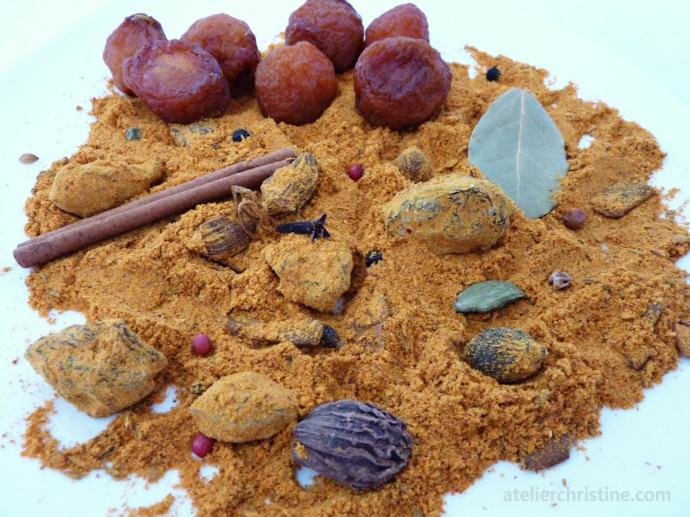
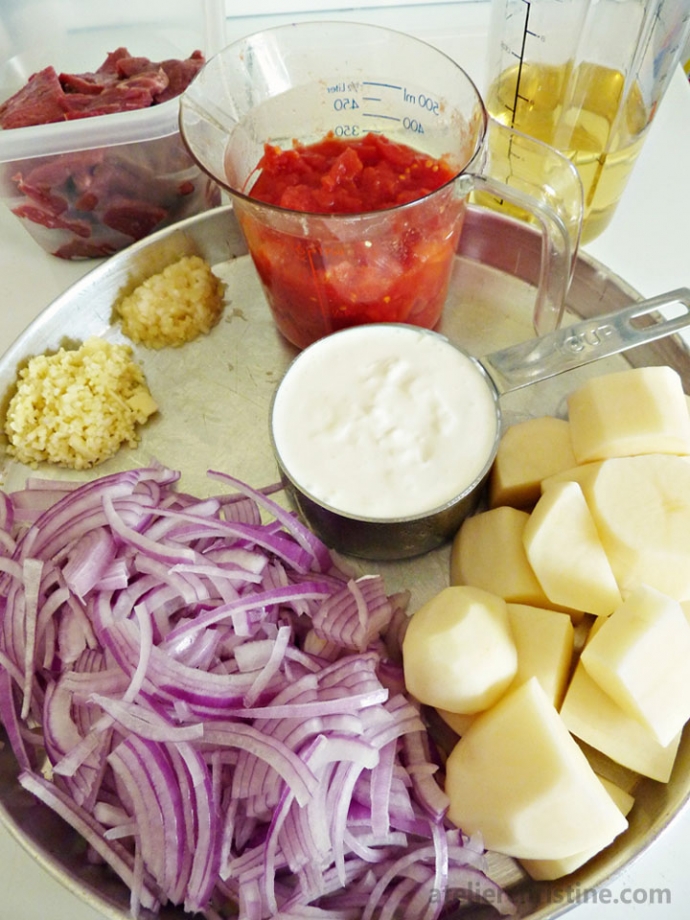
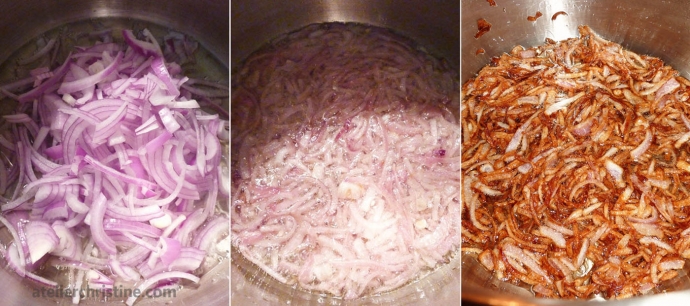
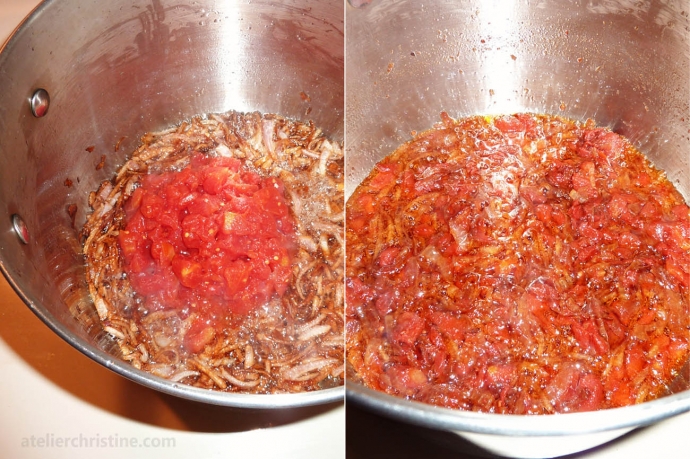


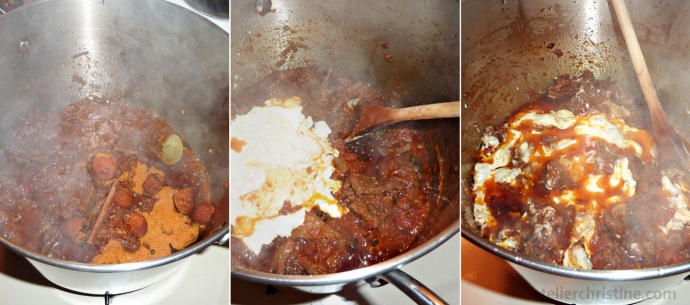
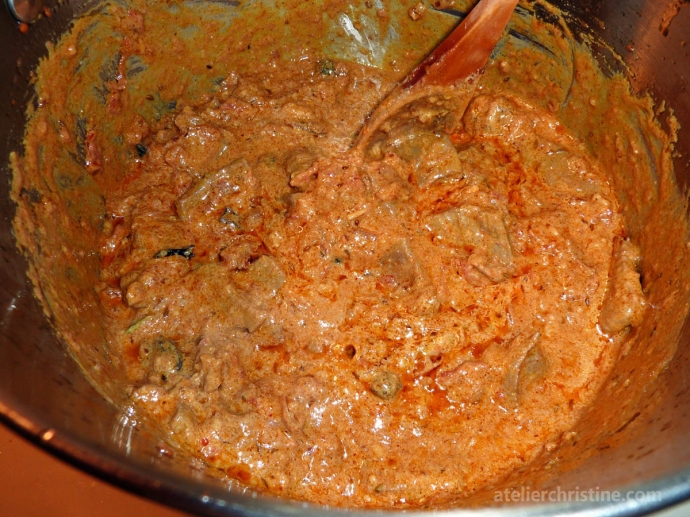
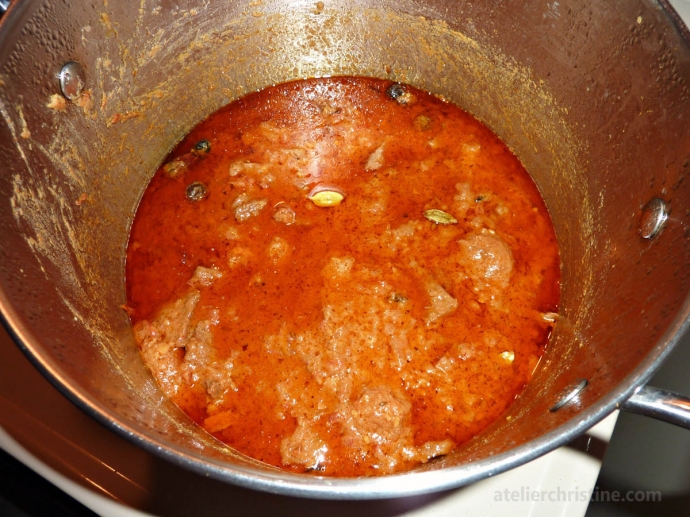
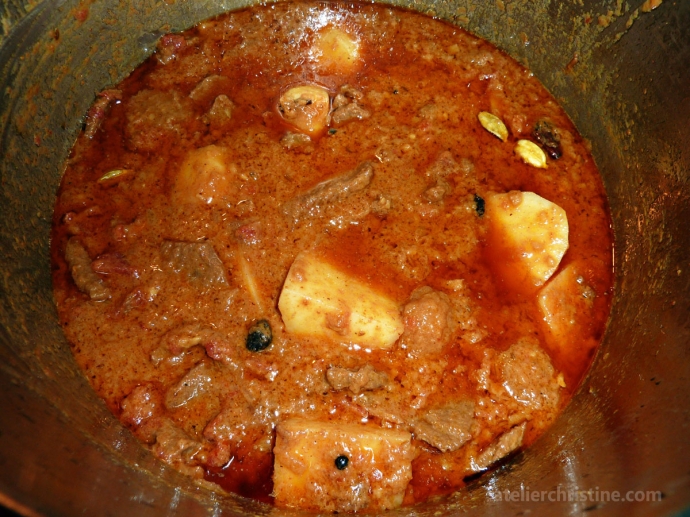
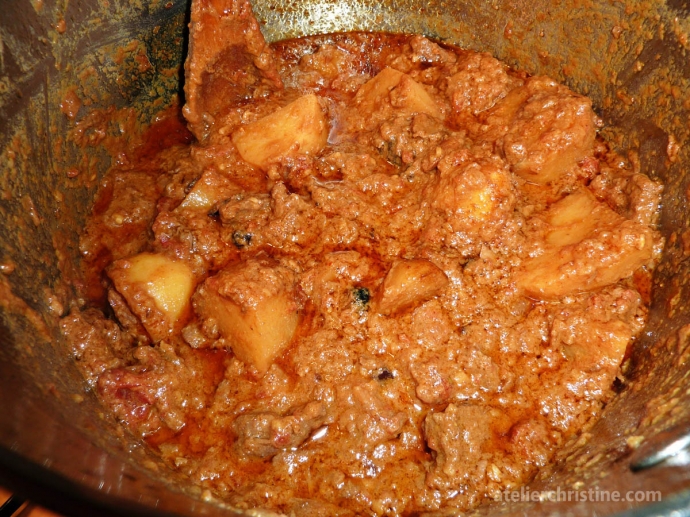

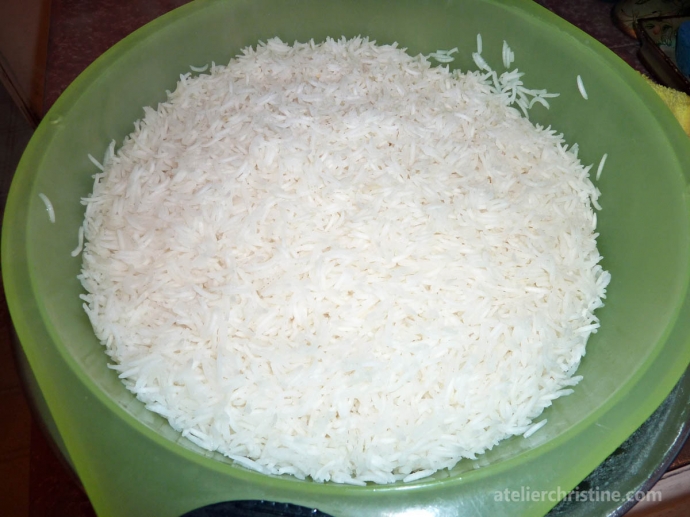


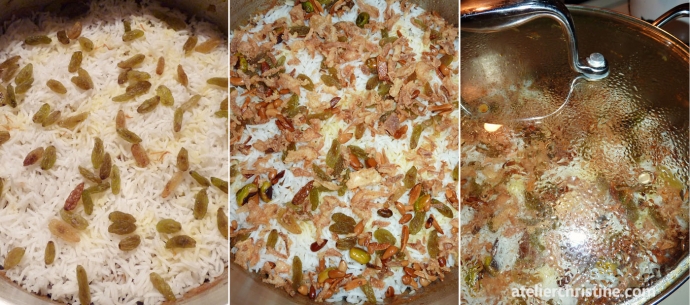
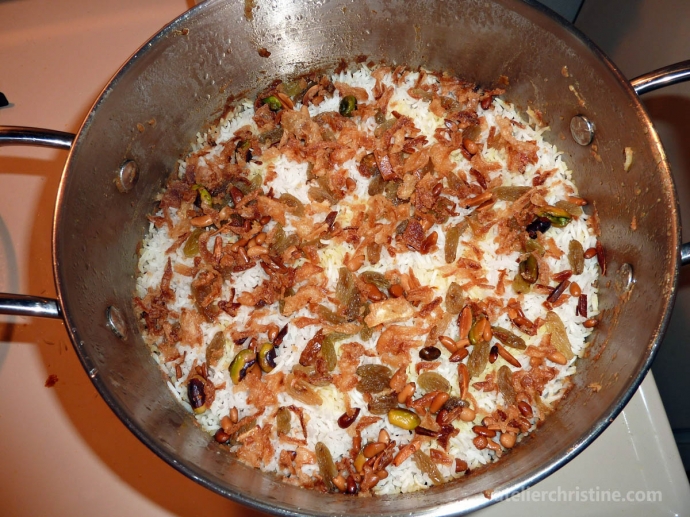
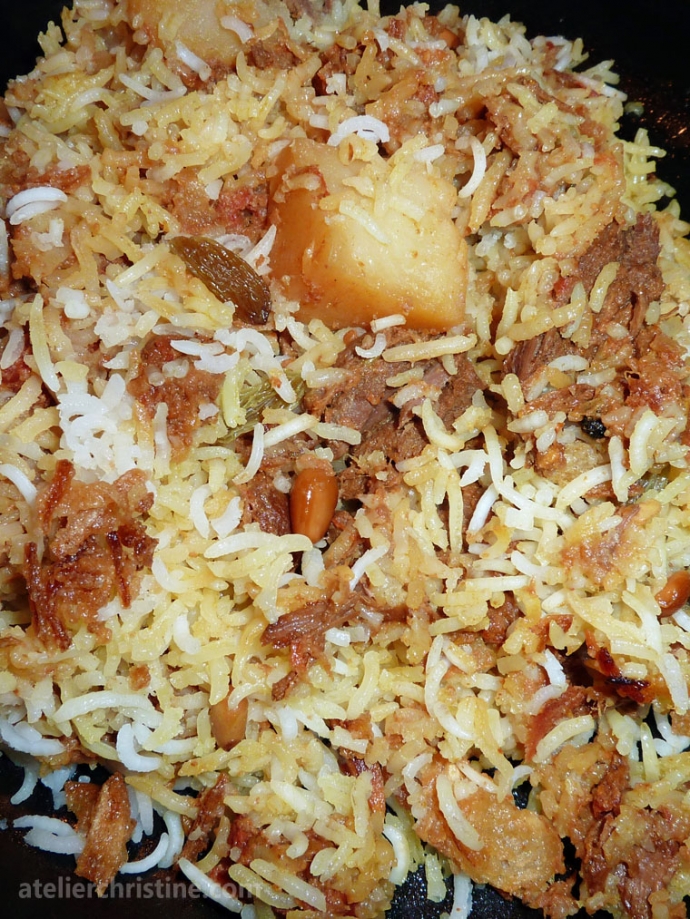





Recent Comments